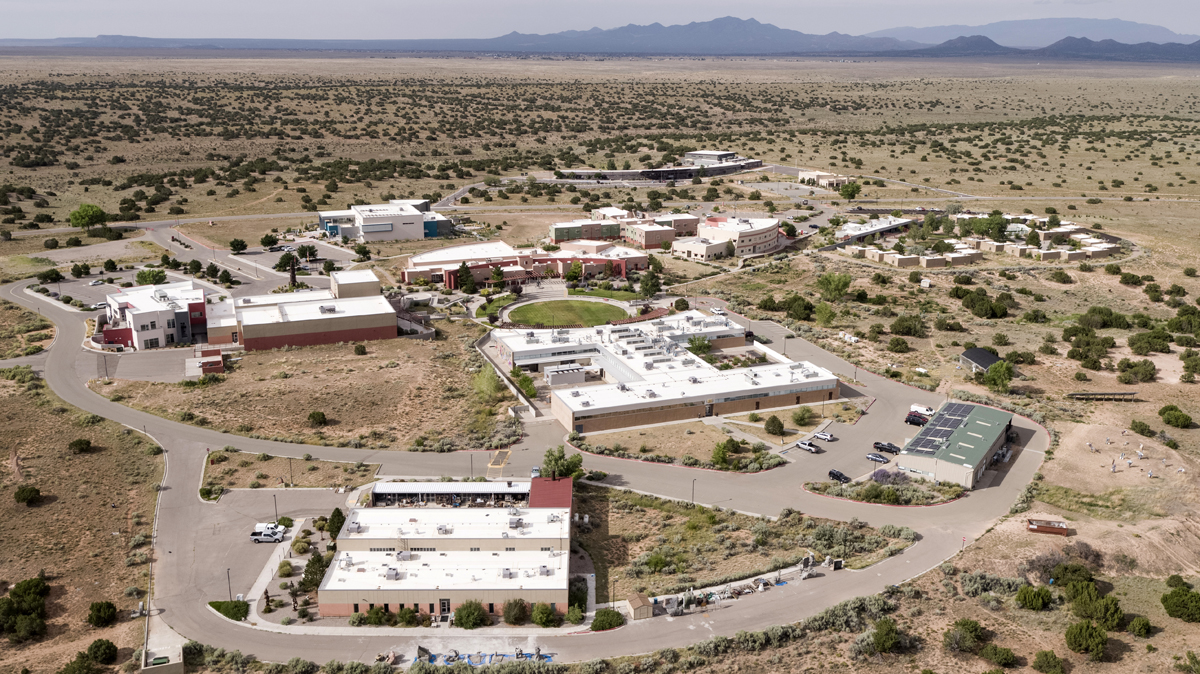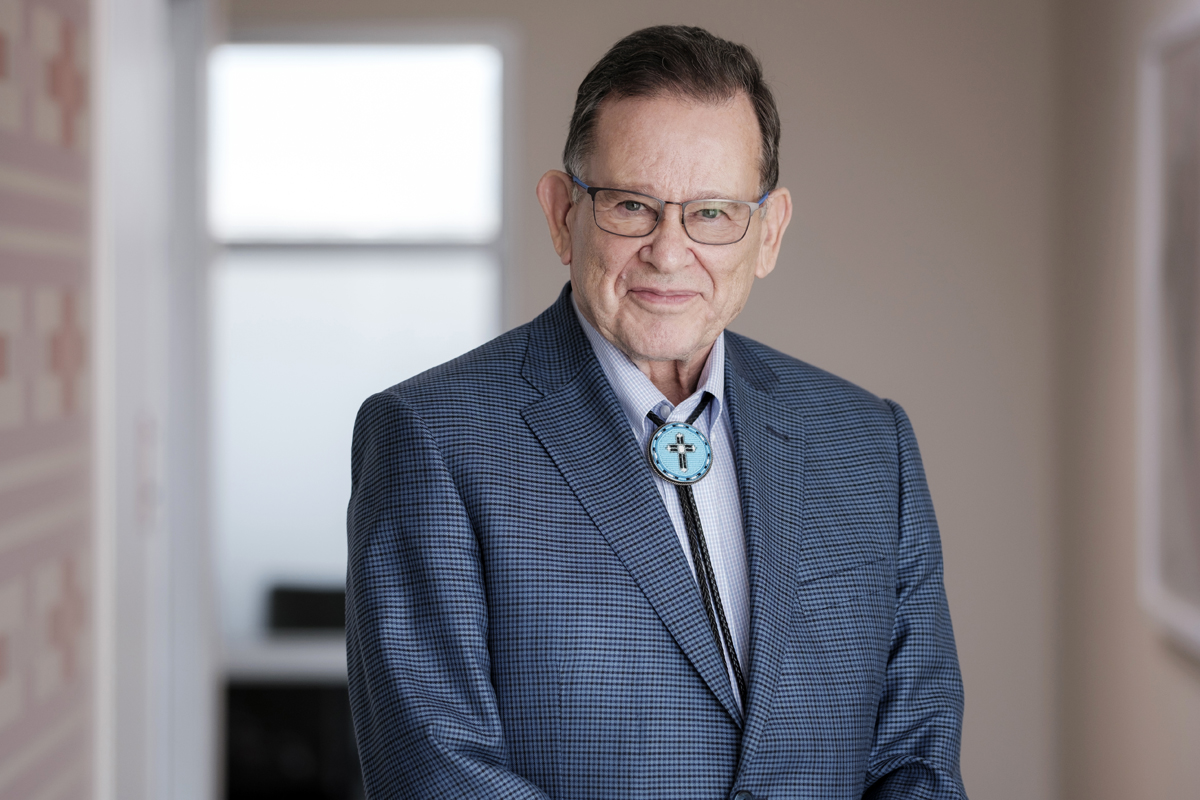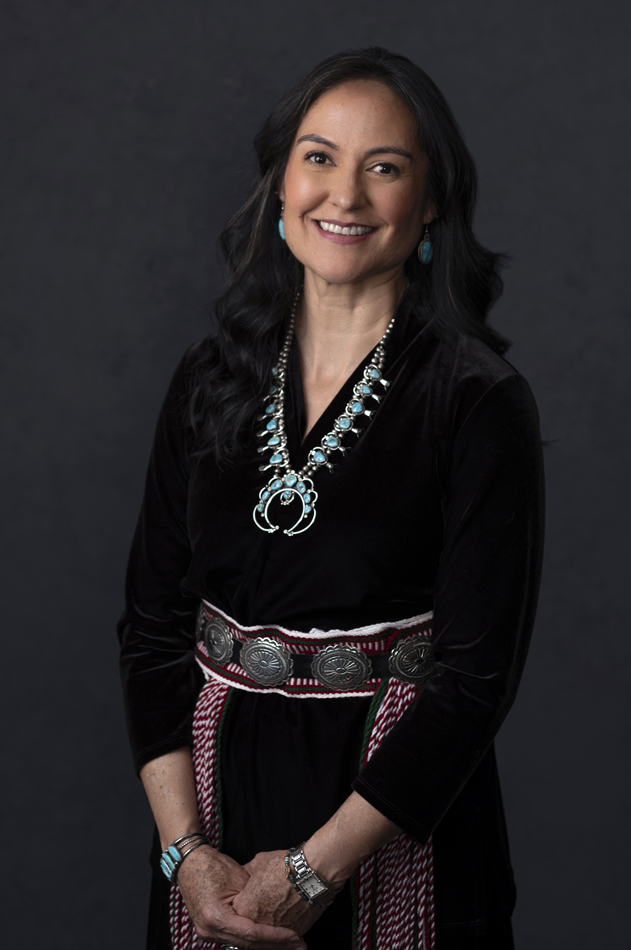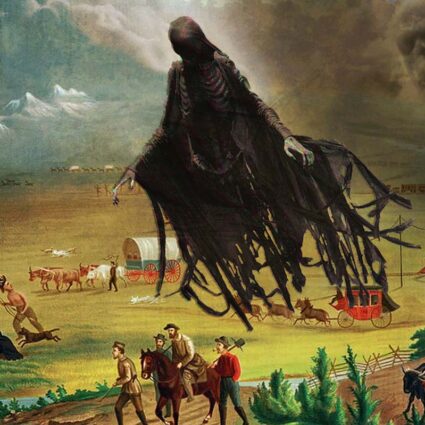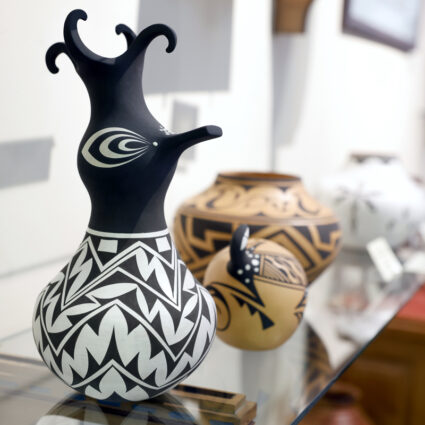Institute of American Indian Arts leaders on turning the tides in their federal funding fight—and why it’s not over yet.
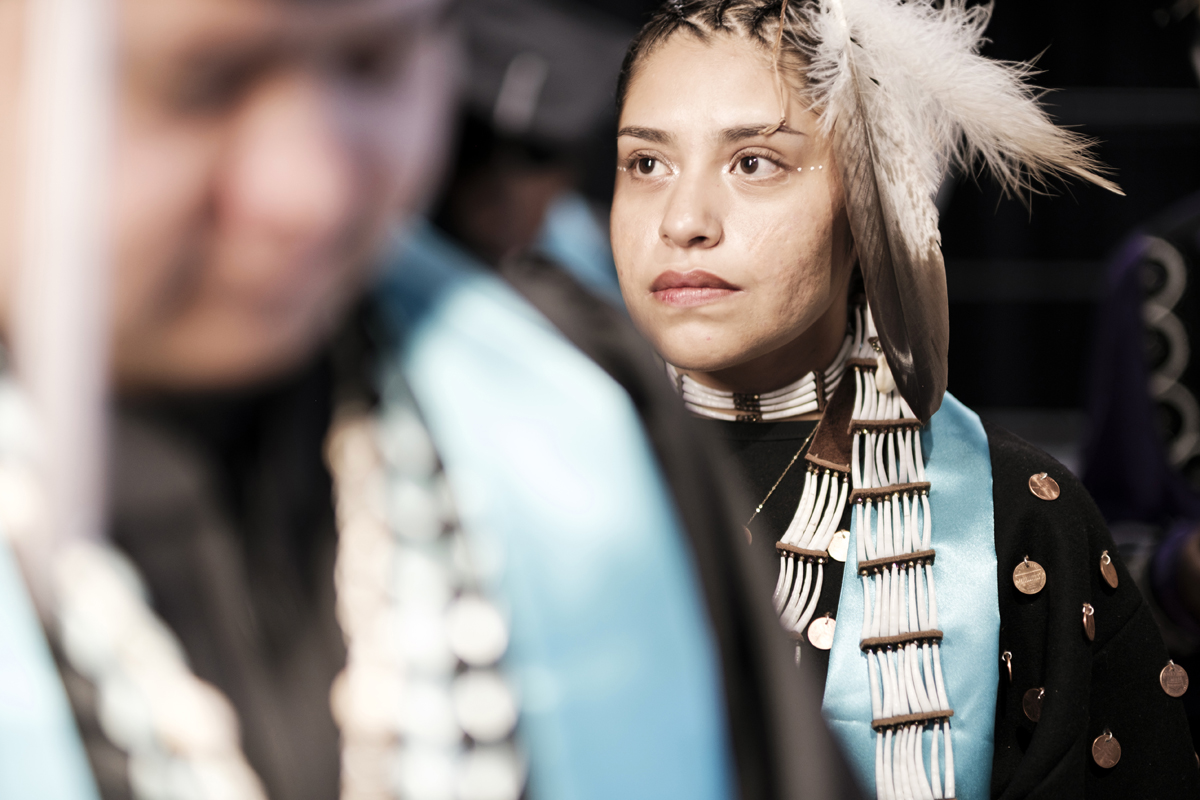
SANTA FE—When Robert Martin (Cherokee Nation), PhD, announced his retirement after eighteen years as president of the Institute of American Indian Arts on January 27, he didn’t expect his career to close on the same note it began: a fight to save a tribal college from losing its funding.
Back in 1981, as a first-time higher-ed president at Southwestern Indian Polytechnic Institute in Albuquerque, Martin mobilized students and local advocates to keep the college open after the Interior Department expunged its federal funds for two consecutive years. Four decades later, IAIA suddenly faced its own existential threat this spring.
Since Donald Trump started his second presidential term and established the Department of Government Efficiency—with its slash-and-burn approach to budgets and government agencies—tribal colleges and universities (TCUs) have been bracing for a reduction in federal support.
In early April, Martin received a notice from the Office of Management and Budget: IAIA’s federal funding for fiscal year 2026 had been eliminated.
“I said, something must be wrong, because it had just zero… and little dashes on both right and left side,” said Martin. “So I called our account manager at OMB, and I said, what does that mean? She says, well, you’re being zeroed out.” If approved, it would be the first time in almost forty years that the university would not receive federal funds.
The news set off months of urgent advocacy, as Martin and IAIA’s allies pressed lawmakers to restore the school’s appropriation. By the time he stepped down in July, there were clear signs that those efforts were paying off.
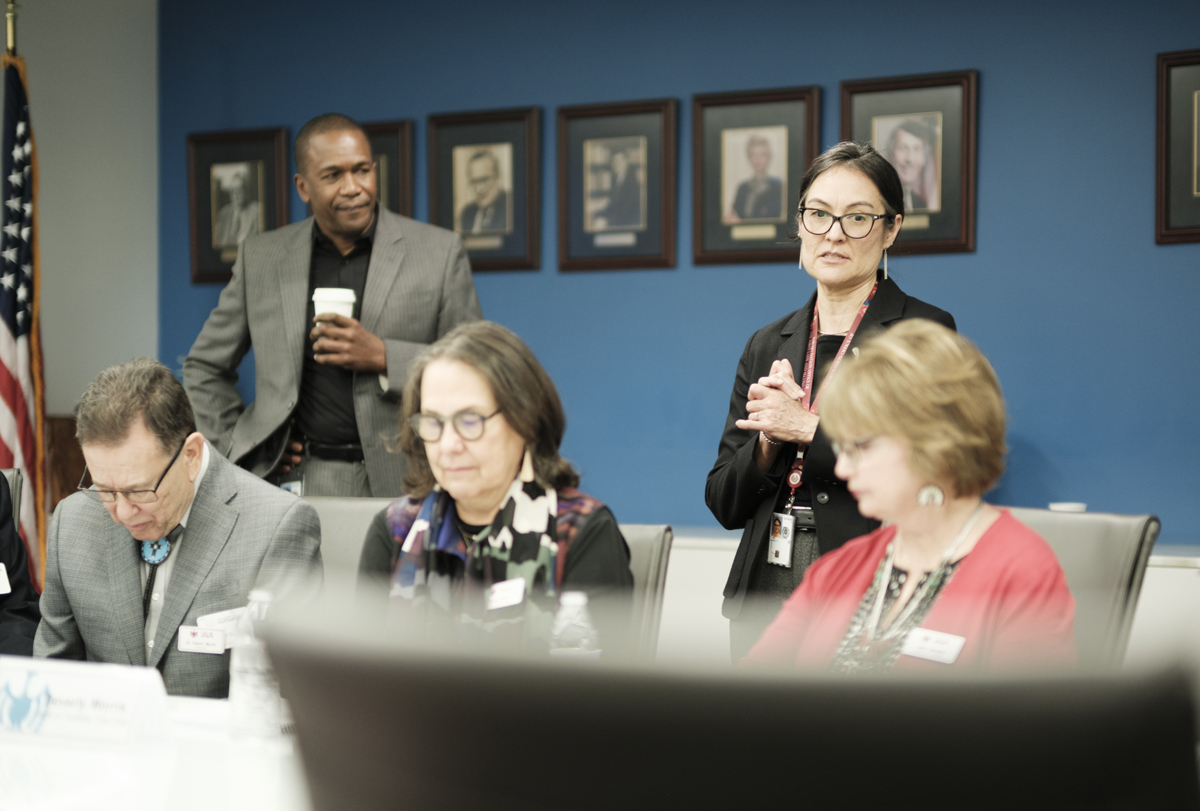
“It’s Not the End”
Carrie Billy (Navajo) is the former president and CEO of the American Indian Higher Education Consortium in Washington, D.C., which advocates on behalf of thirty-seven TCUs nationwide. After fifteen years as president and twenty-four cumulative years with the organization, she resigned in 2023.
“I stepped back from AIHEC and was just enjoying my life,” she said. “Then President Martin called me… and asked for my advice. So, I stepped back in and did what I could.”
Billy knows her way around the Hill. Her career in D.C. started in the 1980s, when she worked for New Mexico Senator Jeff Bingaman. Under President Clinton, she was appointed as the first Executive Director of the White House Initiative of Tribal Colleges and Universities in 1988.
Being zeroed out by the President’s budget is just one part of this whole budget process.
Together, Billy and Martin studied the state of play. For FY26, IAIA had requested the same $13.482 million it’s received since 2024. Because it’s a congressionally chartered institution, its federal funding comes through Congress, not the President.
IAIA also receives “forward funding,” with part of its funds arriving in July. It obtains the rest after Congress passes its annual spending bill—leaving about $6.1 million of its FY25 funds in limbo.
The proposed cut was not part of Trump’s One Big Beautiful Bill Act, which covers mandatory programs like Medicare and Social Security. Instead, it came through the annual appropriations process that funds education and other discretionary spending—wherein the President signals priorities in a budget request. Cue Trump’s motion to slash funding for IAIA and other TCUs.
“Being zeroed out by the President’s budget is just one part of this whole budget process,” Billy said. “It’s not something that you want to go through, ever, but it’s not the end. It’s just the beginning.”
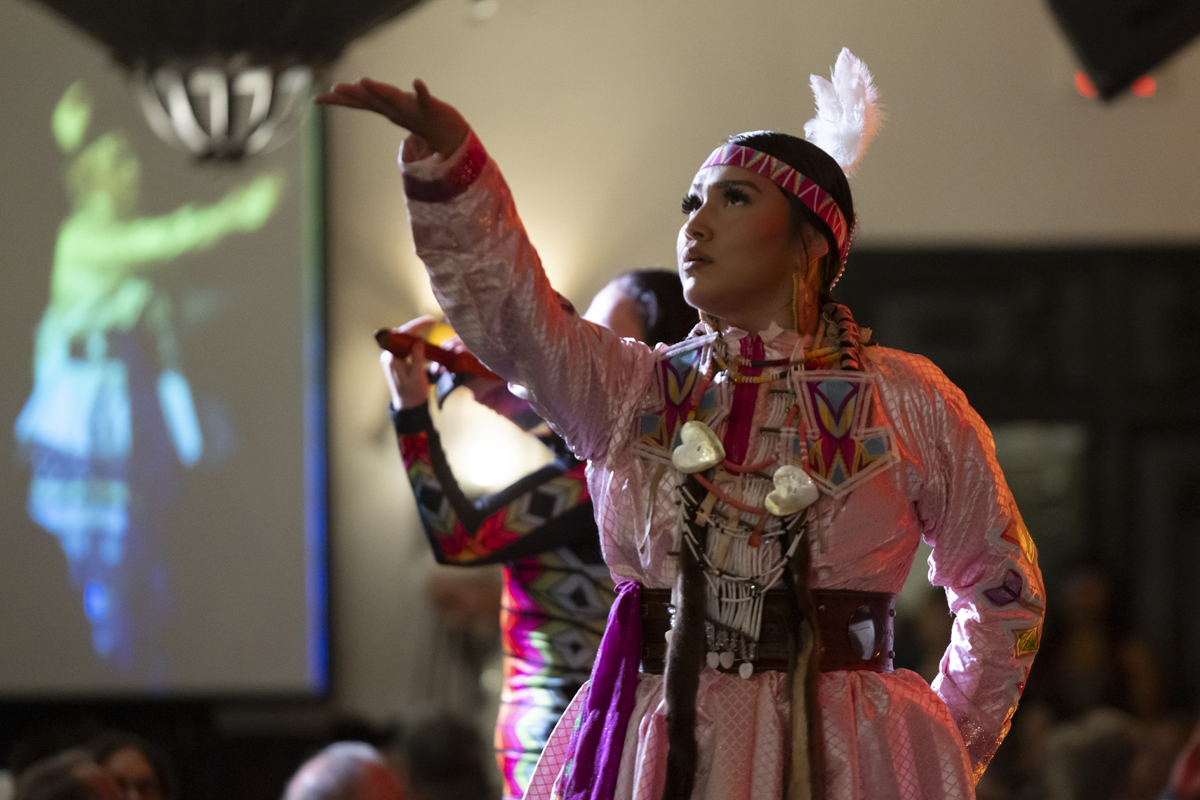
Trust Responsibility
The push to restore IAIA’s federal funds activated its leadership, Board of Trustees, and congressional allies. Students, alumni, faculty, and supporters nationwide also raised their voices.
Breana Brave Heart (Oglala Lakota Sioux and Northern Cheyenne), a student and former Associated Student Government president, organized her peers to contact their congressional representatives. In an email, she wrote that the proposed cuts “felt like an attack on our ability as Indigenous students to tell our stories through art.”
Sovereign tribal nations have a unique relationship with the federal government. Tribal citizenship is not a racial or ethnic categorization, but a distinct political status.
An overarching principle in federal tribal law is “trust responsibility“—a legally enforceable duty of the U.S. government to honor treaties and guarantee certain protections of Native Americans. Education is an explicit obligation in over 150 treaties.
“American Indian and Alaska Native issues are bipartisan or nonpartisan issues,” says Billy. “They’re deeply connected to place and to history and… the exchange of over a billion acres of land.”
The effort to restore IAIA’s funding garnered support on both sides of the aisle. Martin and Billy said the New Mexico delegation was instrumental in their advocacy, along with Republican chairman Tom Cole (Chickasaw Nation) from Oklahoma. As chair of the Appropriations Committee, he plays a critical role in the funding process. Trust responsibility is a consistent point of emphasis at the negotiating table.
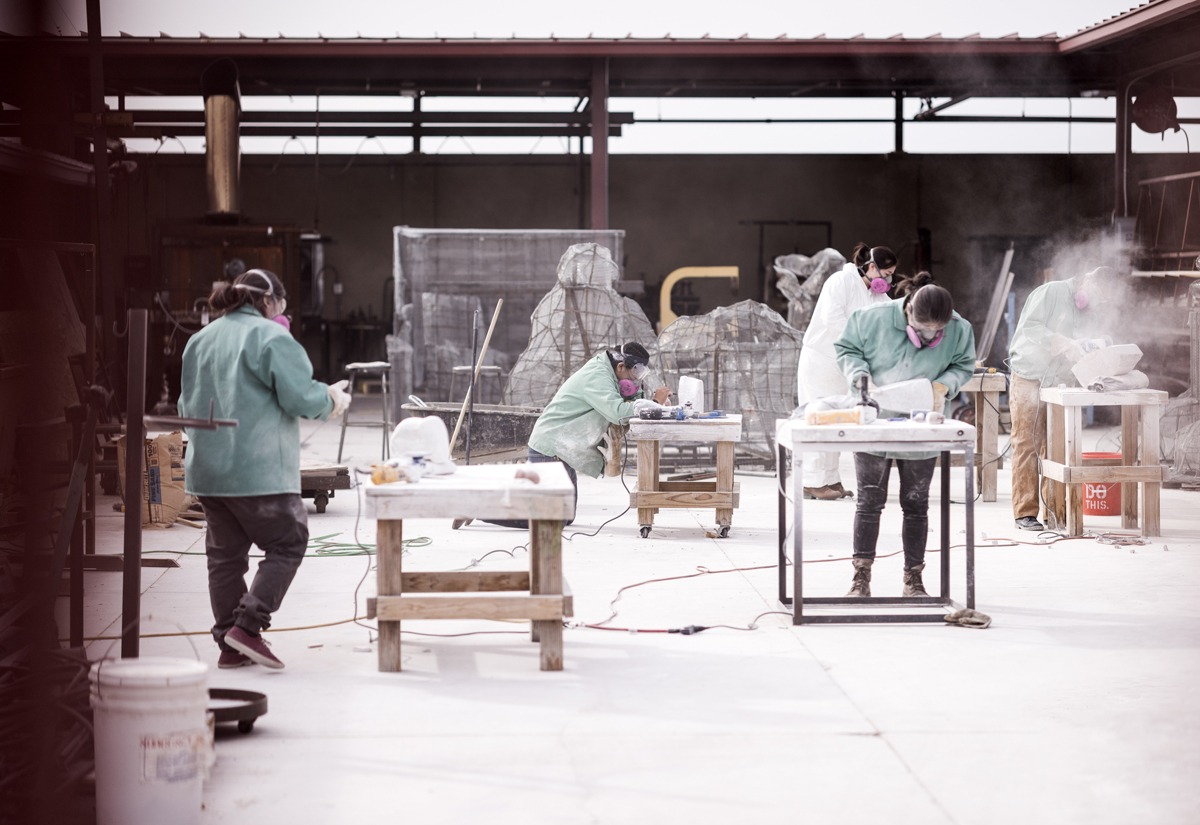
Passing the Torch
Shelly Lowe (Navajo), PhD, served as chair of the National Endowment for the Humanities under President Joe Biden, where she steered a $207 million budget providing humanities grants and support to organizations throughout the U.S.
She was terminated in March, which didn’t surprise her. “The new administration and the new President have the right to bring in the individuals that they want,” she says. All the uncertainty occurring at the federal level led her to carefully consider her next move. She knew she wanted to work with students again and return to the Southwest.
Her career in federal service and predominantly non-Native academic institutions gave her a full-circle view of how the federal government funds higher education and how Indigenous students can lean into their cultural strengths to be successful. She saw Martin’s role at IAIA was opening up and applied. On July 23, IAIA announced that its Board of Trustees had appointed Lowe as its incoming president, effective August 1.
Now more than ever, Native America and the whole country need the gifts [of IAIA’s students].
Martin’s final message as president on July 31 delivered positive news about the status of IAIA’s funding. First, it received the remaining $6.105 million owed for FY25 and received $7.377 million in forward funding for FY26. The House appropriated $12 million to IAIA for FY26, reflecting an 11% decrease in the school’s request for current-level funding. However, the Senate approved funding at the typical $13.482 million, which means it’s still possible that IAIA could secure the full amount.
The next step is for Congress to form a conference committee to negotiate and resolve these different appropriation levels. That is, if Congress actually goes to conference. Billy thinks that “things are in a great place right now,” though all signs point to a government shutdown in October, which she hopes will not last long. Regardless, she says IAIA’s doors will always be open for the next generation of Native artists and visionaries.
“Keep using your voice,” she says. “Now more than ever, Native America and the whole country need the gifts and the courage and the talents, the tools that IAIA is helping them hone and develop.”
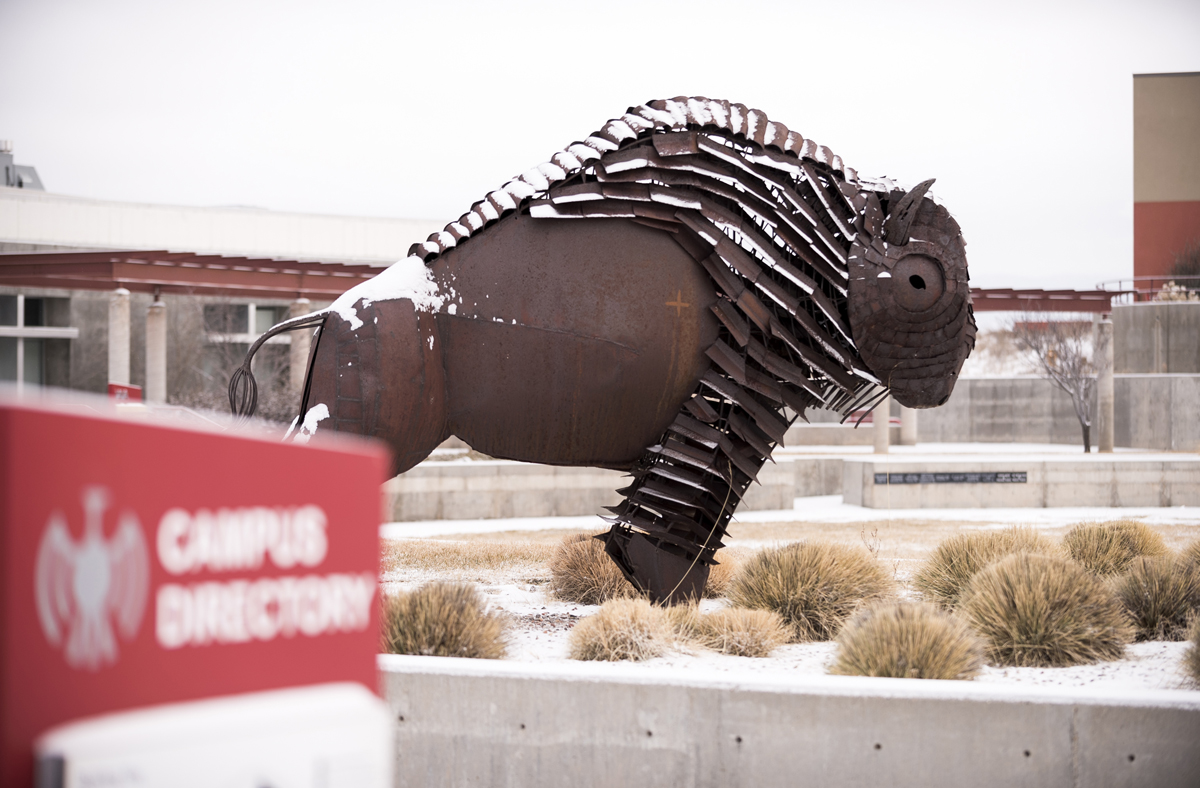
“What Does Higher Education Look Like?”
Lowe’s first month on the job was packed with meetings with New Mexico’s elected officials to underscore IAIA’s value––not only as a hub for Indigenous-centered arts education, but also a driver of local and national economic impact. She is eager to expand partnerships with other institutions and foster relationships with everyone on campus.
“I hope that the students understand that this institution really is built on individuals [and] organizations who are 100 percent behind them and want them to succeed,” she said.
Founded in 1962 by Lloyd Kiva New (Cherokee) and George Boyce, PhD, IAIA has grown into the world’s only college dedicated to contemporary Indigenous art. Its alumni include celebrated figures such as Joy Harjo (Mvskoke), Allan Houser (Chiricahua Apache), Cara Romero (Chemehuevi), and Tommy Orange (Cheyenne, Arapaho).
In a moment when many longstanding governing systems are under siege, Lowe argues that institutions grounded in Indigenous knowledge are uniquely positioned to weather the firestorm and foster renewal. She’s aware of the stakes, but frames this as an exciting time for IAIA—one shaped by big questions.
“What does higher education look like?” Lowe asks. “How has it looked like in the past 150 years, and how do we want it to look for the next 150 years?
